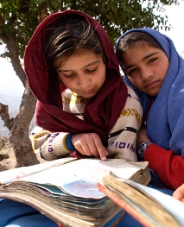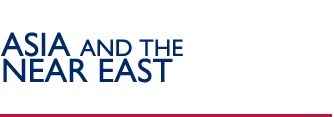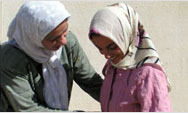 |
|
 |
 |
 |
| USAID Information:
External Links:
|
|
 |
 |
|
 |
 |
|
Pakistan

SNAPSHOT
Date of independence: 1947
Capital: Islamabad
Population: 155.8 million
Annual income per person: $690
Source: World Bank Development Indicators 2005
USAID IN PAKISTAN
www.usaid.gov/pk
CONTACTS
USAID/Pakistan
Tel: 92-51-208-0000
Officer In Charge
Nitin Madhav
Tel: (202) 712-1307
Email: nmadhav@usaid.gov

USAID Education programs promote student learning in some of Pakistan’s
most remote regions by training teachers in participatory learning, increasing
parental involvement, and supporting infrastructural improvements for schools.
(Photo: Masako Imaoka/On Asia)
Overview
The overall goal of U.S. assistance to Pakistan is to support peace and stability in South Asia over the long term. Continued, broad-based economic progress is essential to maintain and enhance Pakistan’s political and economic stability. The U.S. Government demonstrated its commitment to Pakistan by re-opening its USAID Mission in Islamabad in 2002. From 2002 through 2006, USAID provided a total of $449 million to address the most pressing needs: education, health economic growth, and good governance. Responding to the devastating October 8, 2005 earthquake, USAID also provided over $67 million in disaster relief and has committed another $200 million in the longer-term to reconstruct health and education facilities and systems, and restore the livelihoods of those affected, based on USAID’s post-disaster expertise and experience elsewhere.
Programs
Investing In People: Education
Pakistan’s large but weak education system is slowly beginning to reform. Only 42 percent of Pakistani children are in school. The literacy rate is low at almost 49 percent of the total population (only 35 percent for women).
USAID’s education programs cover the entire spectrum, including early childhood instruction, education policy reform, literacy, and scholarships for higher education. In the remote and underserved provinces of Balochistan and Sindh, USAID helped teachers, school administrators, and parents form over 3,022 committees to improve their government schools. In the Federally Administered Tribal Areas (FATA), USAID and the Government of Japan are rebuilding 130 schools. In 2005, USAID gave 109 students Fulbright scholarships to study in the United States and need-based scholarships to 292 graduate students to study in Pakistan.
Investing In People: Health
Pakistan's health indicators are among the worst in the world. For every 100,000 children born, 35 mothers die; and over 72 infants die for every 1,000 live births. Communicable diseases such as tuberculosis remain a serious concern. USAID upgrades 40 hospitals and trains 3,000 health staff to improve care for pregnant women and newborns. It increases the availability of quality reproductive health products, so families can space births. USAID helps to eradicate polio, reach communities vulnerable to HIV/AIDS and decrease the incidence of tuberculosis.
Economic Growth: Economic Opportunities
Pakistan has suffered from decades of internal political disputes and low levels of foreign investment. However, since 2001, government policies, bolstered by foreign assistance and access to global markets, have helped the economy. In 2005, gross domestic product was estimated to have grown by 8.4 percent. USAID helps the poor directly by providing small loans and financial services in parts of the country that lack banks or other lending programs. A nationwide program changes banking practices to reach the large market of small businesses too big for micro-credit but too small for conventional loans. In Balochistan, USAID teaches arid agriculture practices to increase production. USAID helps small- and medium-sized enterprises in industries like dairy, marble, granite, gems & jewelry, horticulture, furniture and surgical instruments to become more competitive and create better jobs.
Governing Justly and Democratically
A legacy of over 50 years of military rule, Pakistan's highly-centralized government has given citizens few opportunities to be heard and served by responsive leaders. USAID helps strengthen the national and provincial parliaments with technical assistance, training and resource centers. USAID also supports the devolution of responsibility and budget to local governments, in part by strengthening them to deliver public services better. USAID will also support Pakistan’s Election Commission, so they can oversee and carry out credible national elections in 2007.
Humanitarian Assistance: Earthquake Reconstruction
The October 2005 magnitude-7.6 earthquake caused massive loss of life and damage in the North West Frontier Province and Azad Jammu & Kashmir. While USAID continues to deliver basic humanitarian assistance to survivors, it is transitioning to recovery and reconstruction with a focus on rebuilding schools, health facilities, lost workforce, and strengthening systems and capacities of public health workers and district government education officials. USAID livelihoods program will identify and disseminate appropriate earthquake-resistant building technology, and include income-generating programs for skilled and unskilled people in the affected areas. This will include a vocational training strategy to establish a cadre of workers who can build back better.
Back to Top ^
|


